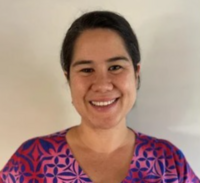Respiratory Conditions
Clearing the air
Why is it a problem?
Why is it a problem?
The basics…
Respiratory conditions affect the airways, including lungs and nasal passages. These conditions can be long-lasting (chronic) or shortterm (acute). Children with these conditions have difficulty breathing, and can experience wheezing, tightness of the chest, and a cough. Common respiratory conditions may involve either difficulty exhaling (e.g. asthma, bronchiectasis, or bronchitis) or difficulty inhaling air (e.g. sinusitis or hay fever).
The cause?
Research shows that common risk factors for respiratory conditions like asthma include:
- poverty
- mouldy, damp, or poorly heated homes
- crowded households
- unhealthy diets
- frequent or severe lower respiratory infections during childhood
- exposure to tobacco smoke and environmental air pollution
- and genetic factors.
The numbers: respiratory illness in New Zealand…
In the government’s 2019/20 Health Survey, 13.5% of children aged 2–14 years had asthma and were currently taking medication for this condition. In 2020, around 4,000 hospitalisations were for asthma and wheeze, nearly 6,500 for acute bronchiolitis, almost 3,000 were for pneumonia, and over 4,100 for acute upper respiratory infections (of multiple and unspecified sites).
Did you know?
The total cost of respiratory conditions in New Zealand, based on 2015 figures, has been estimated at more than $7 billion every year.
What are we doing to help?
Latest research
Helping prevent hospitalisation
Professor Cameron Grant is studying whether OM-85 — a medicine that stimulates immune responses associated with defence against viral infections— can reduce recurrent respiratory tract infections and prevent wheeze in young children.
Studying lung mechanics to improve breathing
Dr Jennifer Knopp aand her team at the University of Canterbury are researching lung mechanics to gain a better understanding of how neonatal ICU patients breathe. With better insights into patient conditions there’s great potential to improve the delivery of assisted ventilation, reduce the risks of ventilator-induced lung injury and reduce the reliance on assisted ventilation.
Treating respiratory viral infections
Professor Stuart Dalziel, Cure Kids’ Chair of Child Health Research, from Starship Children’s Hospital is undertaking a project to assess the effectiveness of using a combination of adrenaline and steroids to treat children with bronchiolitis – the most common reason for New Zealand infants to be admitted to hospital.
Improving the treatment for chest physiotherapy
The main treatment for bronchiectasis and cystic fibrosis is chest physiotherapy to remove excess mucus from the airways. Dr Cass Byrnes and her team have trialled a new device — ‘The BreatheHero’ — to determine if it improves both the quality of life and adherence to treatment for children in the trial.

Isabella was born with cystic fibrosis.
Her parents found out at 27 weeks pregnant that their daughter would be born with this illness.
In 2003 Isabella made her entrance into the world undergoing 12 hours of surgery to remove 2/3 of her short bowel. But Isabella proved to be a fighter and two days later her mother held her for the first time.
Isabella spent the first year of her life in Starship Hospital, getting her to a point that her family could care for her at home.
Isabella is always at high risk of becoming sick, which can be very isolating for her and her family.
Isabella has a huge heart and makes the most out of every situation. Isabella’s biggest supporters are her Mum, Alex, her sisters Maggie and Harriet, and her dad, John.
5 Active Respiratory Conditions projects
-
Dr E. PereliniHealthcare access equity in childhood asthma in Aotearoa.Awarded $299,844Respiratory Conditions
-
Professor S. DalzielBetter management of mild asthma in childrenAwarded $236,931Respiratory Conditions
-
Dr A. WallaceTrialing shorter treatments for preschool children with asthma (STAR study)Awarded $109,655Respiratory Conditions
-
Professor S. DalzielPrevention of admission for bronchiolitisAwarded $106,256Respiratory Conditions
-
Professor P. Vuillermin, Professor C. GrantPrevention of wheeze-associated hospitalisation in pre-schoolersAwarded $110,000Respiratory Conditions

Help fund researchers like Stuart.
Every cent helps, no matter how small.
Big Research
We are currently supporting over $16 million of child health research projects.
Learn more-
Preterm Health
4 Active projects$464.8K -
Childhood Cancers
2 Active projects$3.2M -
Maternal and Infant Conditions
4 Active projects$751.4K -
Rheumatic Heart Disease
6 Active projects$2.8M -
Childhood Development and Learning Difficulties
2 Active projects$228K -
Neurological and Neurodevelopmental Disorders
3 Active projects$749.2K -
Endocrinology, Metabolism & Nutrition
1 Active project$125K -
Mental Health and Wellbeing
8 Active projects$1.2M -
Genetic Conditions and Rare Disorders
3 Active projects$801K -
Respiratory Conditions
5 Active projects$862.6K -
Infectious Disease
2 Active projects$219.7K -
Gastrointestinal Conditions
1 Active project$600K





